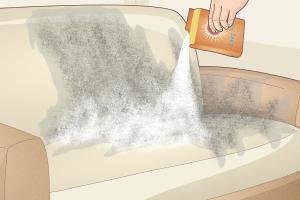Ultimate Guide: How to Clean Smoke Damage Effectively and Thoroughly

-
Quick Links:
- Understanding Smoke Damage
- Types of Smoke Damage
- Health Risks of Smoke Damage
- Initial Steps to Take
- Essential Cleaning Supplies
- Step-by-Step Cleaning Process
- Removing Smoke Odor
- When to Call Professionals
- Real-World Case Studies
- FAQs
Understanding Smoke Damage
Smoke damage occurs as a result of fire, and it can significantly impact your home’s structure and your health. Understanding the nature of smoke damage is the first step in effectively cleaning it. Smoke particles can penetrate various surfaces, leading to long-term damage if not addressed promptly.
Types of Smoke Damage
There are primarily two types of smoke damage: dry smoke and wet smoke.
- Dry Smoke: Formed from fast-burning fires, dry smoke tends to leave a powdery residue that is easier to clean.
- Wet Smoke: Caused by slow-burning fires, wet smoke leaves a sticky residue and a strong odor, making it more challenging to clean.
Health Risks of Smoke Damage
Exposure to smoke damage can lead to various health issues, including respiratory problems, skin irritation, and eye discomfort. It’s essential to address smoke damage quickly to reduce these risks.
Initial Steps to Take
Before diving into the cleaning process, take the following initial steps:
- Ensure safety: Check for structural damage and wear protective gear.
- Ventilate the area: Open windows and use fans to reduce smoke concentration.
- Document the damage: Take photos for insurance claims.
Essential Cleaning Supplies
Having the right cleaning supplies is crucial for effective smoke damage cleanup. Here’s a list of essential items:
- Protective gear (gloves, masks, goggles)
- Vacuum with a HEPA filter
- Microfiber cloths
- All-purpose cleaner
- Baking soda (for odor removal)
- White vinegar
- Commercial smoke damage cleaner (optional)
Step-by-Step Cleaning Process
1. Remove Loose Particles
Start by using a vacuum cleaner with a HEPA filter to remove loose soot and debris from surfaces.
2. Clean Surfaces with a Damp Cloth
Using a damp microfiber cloth and an all-purpose cleaner, wipe down walls, ceilings, and furniture to remove soot residue.
3. Deep Clean Carpets and Fabrics
For carpets and upholstery, consider professional cleaning or renting a steam cleaner. Use a fabric-safe smoke damage cleaner for best results.
4. Clean HVAC Systems
Change filters and clean ducts to prevent smoke particles from circulating in your home.
5. Address Odors
Use a mixture of baking soda and vinegar to neutralize odors in carpets and fabrics.
Removing Smoke Odor
Odor removal can be challenging. Here are some effective methods:
- Use an ozone generator cautiously.
- Place bowls of vinegar or activated charcoal around the affected areas.
- Consider professional odor removal services if odors persist.
When to Call Professionals
If the damage is extensive, or if you’re not comfortable handling the cleanup, it’s best to call professionals. They have specialized equipment and expertise to handle severe smoke damage safely.
Real-World Case Studies
In a recent case study conducted by the National Fire Protection Association, homes affected by smoke damage were restored effectively using a combination of professional cleaning and homeowner efforts. The study highlighted that timely action is essential for minimizing damage and restoring air quality.
FAQs
1. Can I clean smoke damage myself?
Yes, you can clean smoke damage yourself, but be cautious and consider professional help for extensive damage.
2. How long does it take to clean smoke damage?
The time it takes can vary from a few hours to several days, depending on the extent of the damage.
3. What are the long-term effects of smoke damage?
Long-term effects can include persistent odors, respiratory issues, and structural damage if not cleaned properly.
4. What should I do if my clothes smell like smoke?
Wash them with a heavy-duty detergent and add a cup of vinegar to neutralize odors.
5. Is smoke damage covered by insurance?
Most homeowner’s insurance policies cover smoke damage, but it’s best to check your specific policy.
6. Can smoke damage be completely removed?
While many surfaces can be cleaned effectively, some materials may retain odors or require replacement.
7. Do I need to replace my carpets after smoke damage?
It depends on the severity of the damage. Light smoke damage may be cleanable; heavy damage may necessitate replacement.
8. How can I prevent smoke damage in the future?
Install smoke detectors and maintain your home’s electrical systems to reduce the risk of fire.
9. What types of cleaning products are best for smoke damage?
Look for enzymatic cleaners specifically designed for smoke damage, as they break down odor-causing particles.
10. Should I attempt to clean smoke damage immediately?
Yes, addressing smoke damage promptly helps prevent further deterioration and health risks.
Conclusion
Cleaning smoke damage can be a daunting task, but with the right approach, it is manageable. Whether you choose to tackle the cleanup yourself or hire professionals, taking swift action is essential for restoring your home and improving air quality.
References
- National Fire Protection Association
- Environmental Protection Agency
- American Red Cross - Fire Safety
Random Reads
- Unlocking precision 5 quick steps to enable aim assist in fortnite
- How to replace spa jets
- How to replace rollers on sliding glass doors
- How to use bluetooth technology
- Mastering your mac add remove apps dock
- Speed up steam downloads
- Steam friends wishlist
- Stop discord startup
- How to upgrade pip
- How to upgrade your network to gigabit ethernet